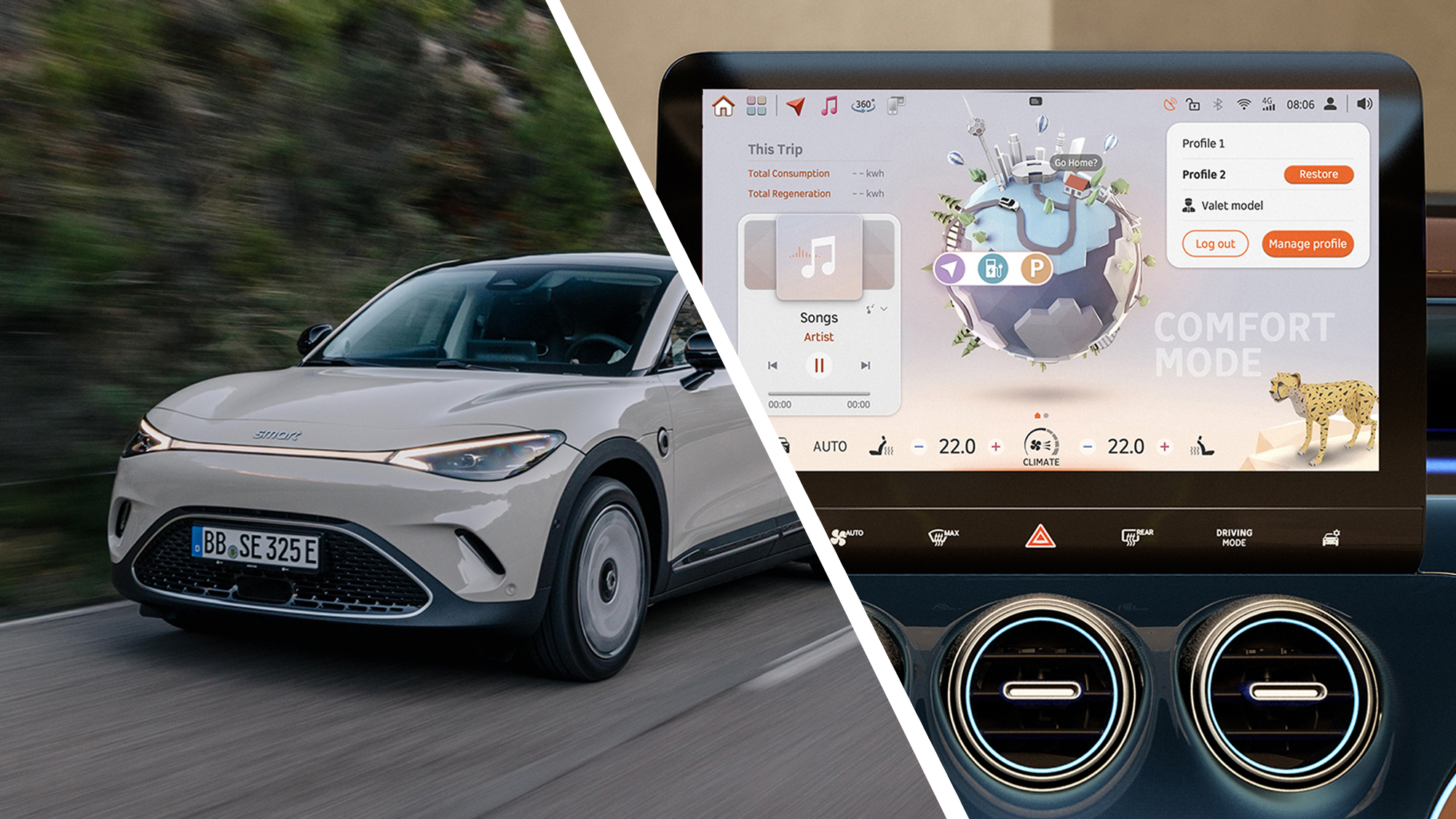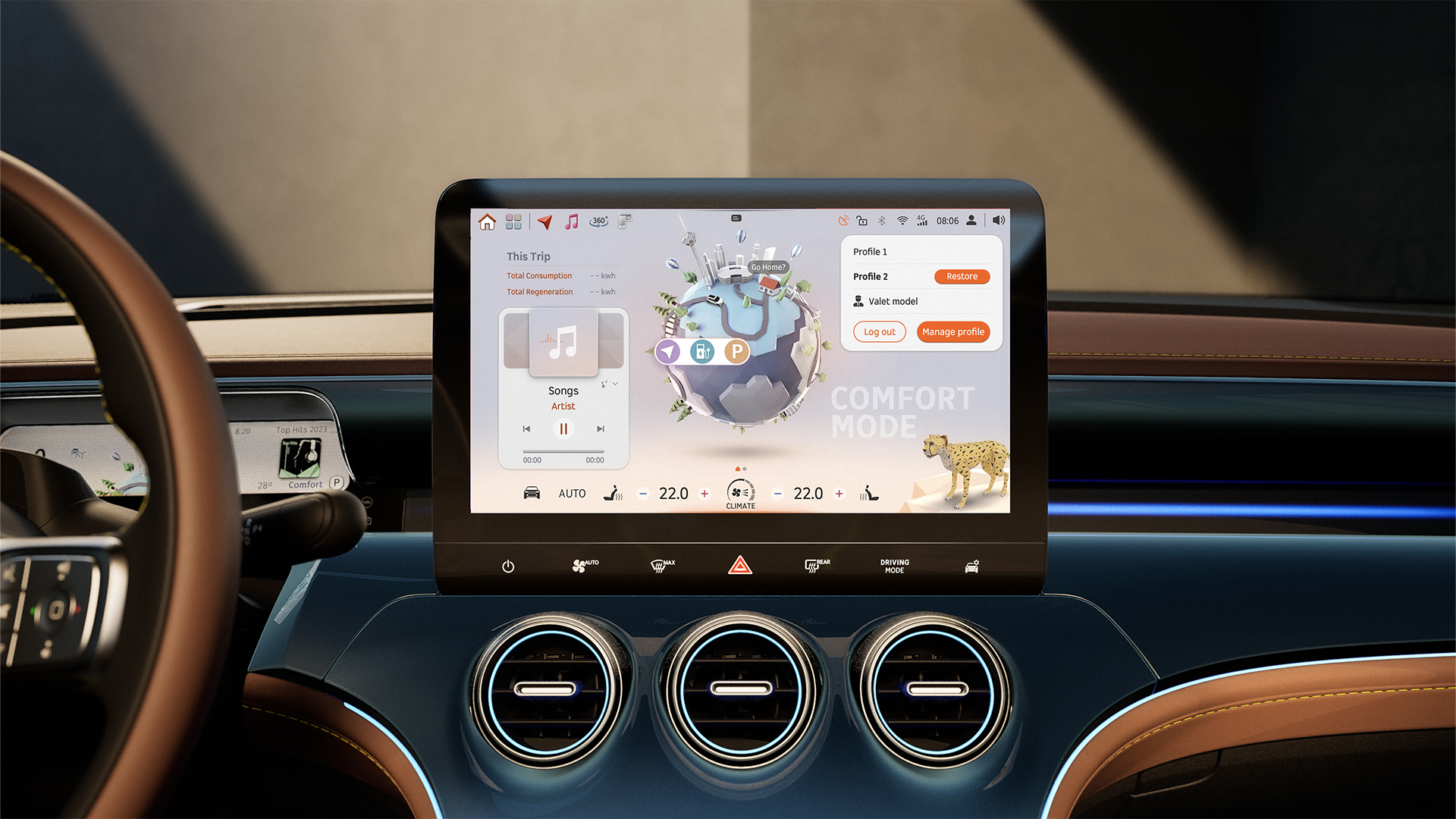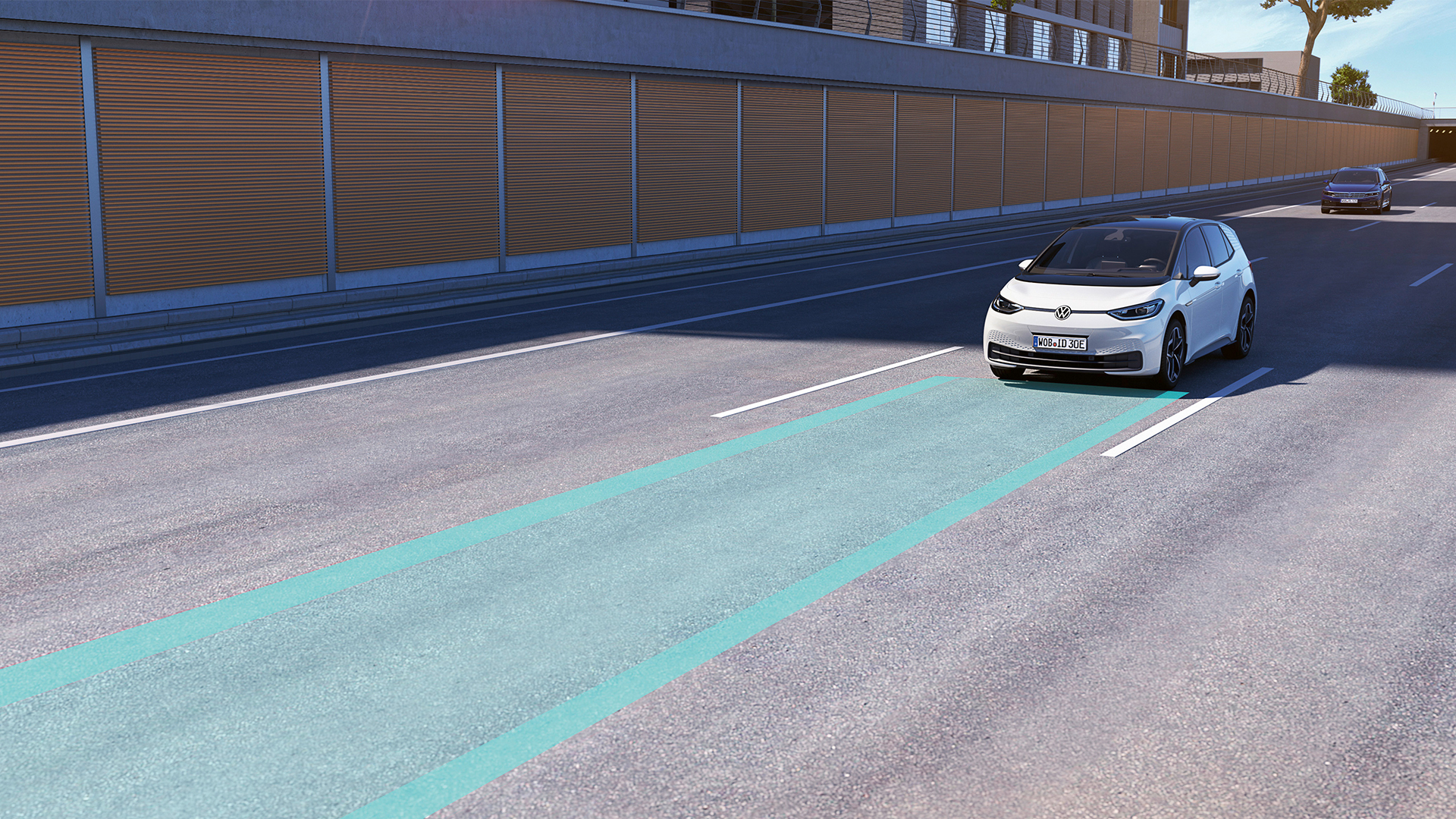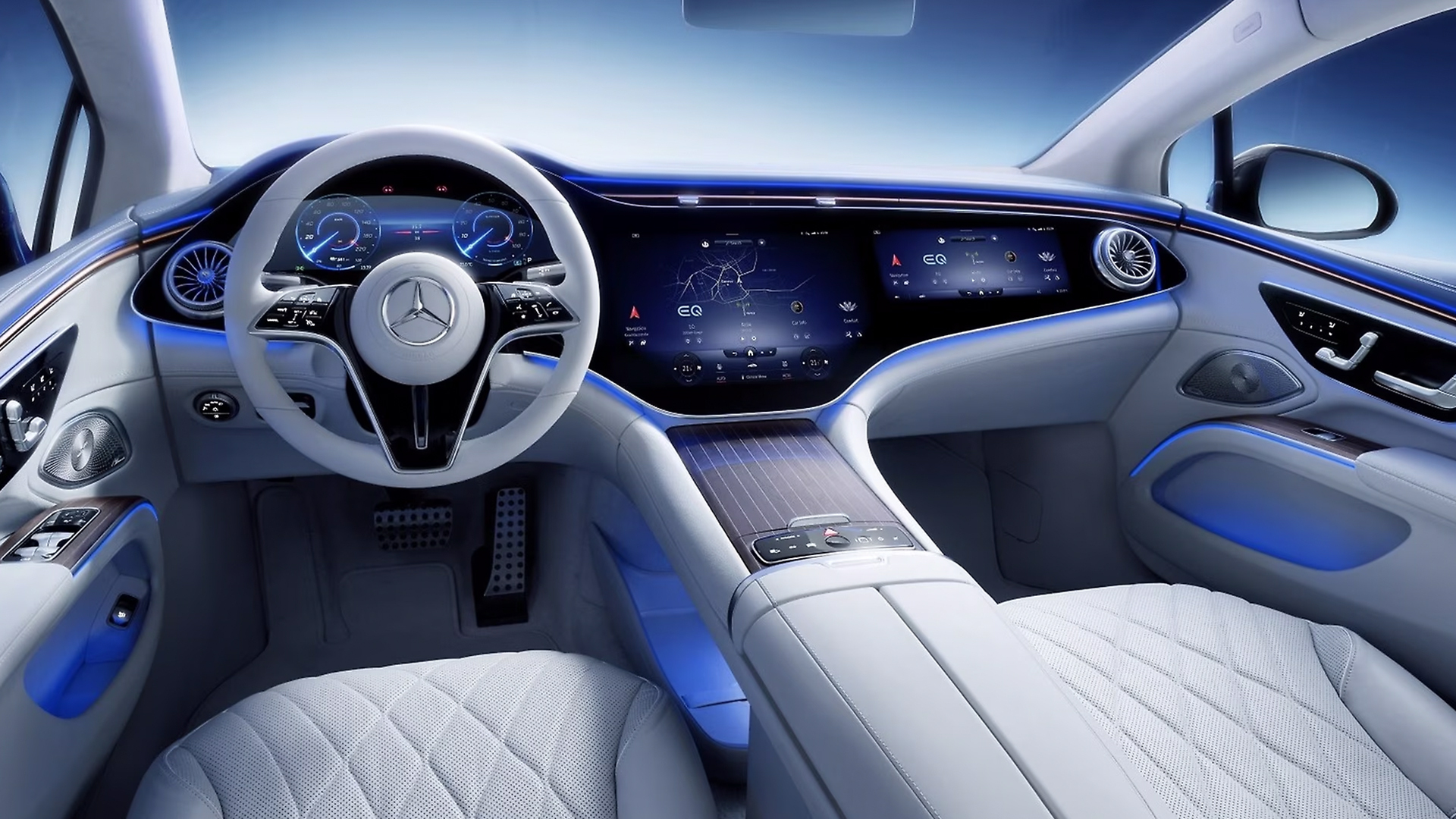
If the Oxford English Dictionary is ever looking for a new entry to aptly describe ‘irony’, it couldn’t do much better than test drive the latest Smart #3.
Aside from sporting a frankly ridiculous name (yep, you have to say hashtag) and delivering a distinctly average driving experience, the latest electric model from the Mercedes-Benz and Geely joint venue features one of the most frustrating infotainment and on-board safety systems currently on sale. And that's saying something.
It incorporates an in-vehicle driver monitoring system that uses a camera mounted just behind the steering wheel to constantly monitor and track the driver’s line of sight. If it feels eyes are off the road for too long, bam! It hits you with an audible and physical notification.
However, Smart has also seen fit to commit everything, aside from a front a rear window defrosting function, to its 12.8-inch tablet-style infotainment system. So if you want to make it warmer or cooler inside the cabin, you have to rummage around the various menus and sub-menus to locate the controls.
Do this and… Bam! Another distracted driver warning appears, reducing the volume of whatever you have been listening to and likely making you miss the key part of that podcast, audiobook or radio show. Block the front-facing camera and... Bam! Warnings right in the kisser.
I’ve lost count of the number of modern EVs I've driven that soundtrack the entire drive with audible notifications and it’s only going to get worse.
It could be forgiven if this was the only overbearing system at play, but the Smart #3 – and its awkwardly-styled little brother in the #1 – go even further with lane-keep assist notification, audible bongs if you dare stray 1mph over the speed limit and warnings that – shock, horror – there’s another vehicle approaching from behind, in front or the sides.
It’s infuriating and even more maddening is the process to turn all of this stuff off. I won't bore you with the details, but it requires diving into vehicle settings and then navigating a further two sub-menus (and adhering more written warnings) to deactivate everything. All the while, the driver attention system is having a meltdown.
It's safer to pull over, grab a coffee and begin the painful task of randomly poking the screen. All the while a little animated cheetah (it's supposed to make the AI voice control more approachable) aimlessly roams around, seemingly mocking you.
Not all safety systems are the same

Last month, Smart released an over-the-air (OTA) update that added a 'Drive Setup' button, which allows users to create a profile and have their preferred driving modes and assistance systems settings activated with the press of a button.
It's almost an admission of guilt, but to lumber Smart with all the blame on this subject would be very wrong, as the number of automakers with distinctly irritating safety systems is growing with every passing month.
We’ve reached a point where passive safety innovation is slowing and software-controlled active systems are all the rage.
Vehicles from the Hyundai Motor Group (Hyundai, Kia and Genesis) love to sound the alarm at the feint whiff of a speed limit change or an upcoming hazard, with varying degrees of difficulty when it comes to deactivating said settings.
Lexus, Honda and Mercedes-Benz for example, have long been purveyors of physically yanking a steering wheel in the opposite direction if it feels the driver is getting too close to a central reservation, despite the fact that many European roads are barely wide enough for the brands’ gargantuan SUVs anyway.
I’ve lost count of the number of modern EVs I have driven that soundtrack the entire drive with audible notifications and it’s only going to get worse.

Since passive safety systems, such as the seatbelt, airbags and crumple zones, were first introduced, road accident rates around the world have plummeted, while anti-lock braking systems (ABS), traction control and emergency braking functionality have undoubtedly helped reduce fatalities even further.
But we’ve reached a point where passive safety innovation is slowing and software-controlled active systems are all the rage.
So much so that the world’s leading safety assessment programs, such as North America’s New Car Assessment Program (NCAP) and Euro NCAP in Europe, are continually increasing the number of Advanced Driver Assistance Systems (ADAS) required from the manufacturer to achieve top marks, or the flashy full five-star safety rating to plaster upon posters.
It’s why a budget brand like Dacia will typically receive a lower star rating than many of its European rivals. To keep costs down, it doesn’t add the complicated and often expensive active safety systems. Although Dacia cars perform just as well as rivals in physical crash tests.
This is part of the reason why things like automatic speed limit recognition and lane keep assist systems are being joined by ever-more nannying technology, such as the aforementioned driver monitoring cameras.
Dealing with the backlash

But therein lies the problem – as some of the world’s leading safety assessment programs have noticed that a worrying number of drivers are becoming annoyed by the sheer amount of noise in the cabin and are switching off potentially useful systems.
We want to completely rule out ghost braking situations or those experiences where safety systems jump in for no reason
Martin Magnusson, Volvo
According to research by road safety charity Brake and AXA insurance in the UK, more than a third (41%) of drivers surveyed in a new study have turned off features in their car designed to keep them safe.
With so many of these systems buried among layer-upon-layer of touchscreen menu, there’s also a high chance that drivers are unwittingly turning off genuinely useful features that could have a major impact on road safety, such as emergency brake assist that could prevent you from ploughing into the car ahead that’s decided to slam on its brakes for no reason.
Last year, Euro NCAP secretary general Michiel van Ratingen told Autocar that it was “working with manufacturers to minimize ‘noise pollution’ in the cabin and the more annoying features of these technologies.”

Similarly, a discussion I had with Martin Magnusson, the man in charge of Volvo’s ADAS and software systems, revealed that he too was worried that there is a high chance many modern drivers simply want to turn off many active safety systems, undoing all of the tireless work he and Volvo as a whole has invested in creating them.
The EX90, for example, is the first production car to come fitted with Lidar technology as standard, which Volvo hopes will read the road ahead much further than any camera-based system can and reduce unwanted intervention from said systems. Pair it with smart AI, and it will be able to determine a more ‘human-like’ course of action.
"We want to completely rule out ghost braking situations or those experiences where safety systems jump in for no reason," Magnusson told me at the launch of the EX90.
To compound matters, there have been a number of reports that suggest that some of today’s ADAS technology might not actually reduce the number of vehicular collisions.
The Insurance Institute for Highway Safety (IIHS), an American nonprofit organization, studied crash data from BMW vehicles fitted with active lane-keep assist and found that “neither lane departure prevention alone nor the same feature combined with partial automation had a significant effect on crash rates, either on limited-access highways or on roads with lower speed limits."
A noisy future

It’s very easy to sound like a curmudgeon when venting on the topic of modern safety systems in vehicles, but now is not a great time if you genuinely enjoy the thrill of driving.
Electrification is making modern cars feel more homogenous than ever, while a trend towards infotainment and technological firepower is replacing the desire among automakers to create light, fun and cheap vehicles that prove a giggle to throw around country roads.
Yes, adaptive cruise control is fantastic under the right circumstances and the little yellow light that appears in the wing mirrors when something is in my blind spot is genuinely useful. But being constantly reminded to ‘drive safe’ and ‘pay attention’, having the steering wheel autonomously yanked or the vehicle slamming on the brakes in a phantom emergency isn’t.
It currently feels like we are in an awkward middle ground where the technology (and surrounding legislation) isn’t robust enough for full self-driving vehicles, in which case there wouldn't be any need for driver notifications, yet manufacturers are continuing to pile on the active safety toys to help sell cars regardless.
The fact that many automakers are now introducing a single button to turn all of this stuff off speaks volumes. Perhaps it’s time to ease back on the relentless nannying? Or just buy an old Dacia instead.







